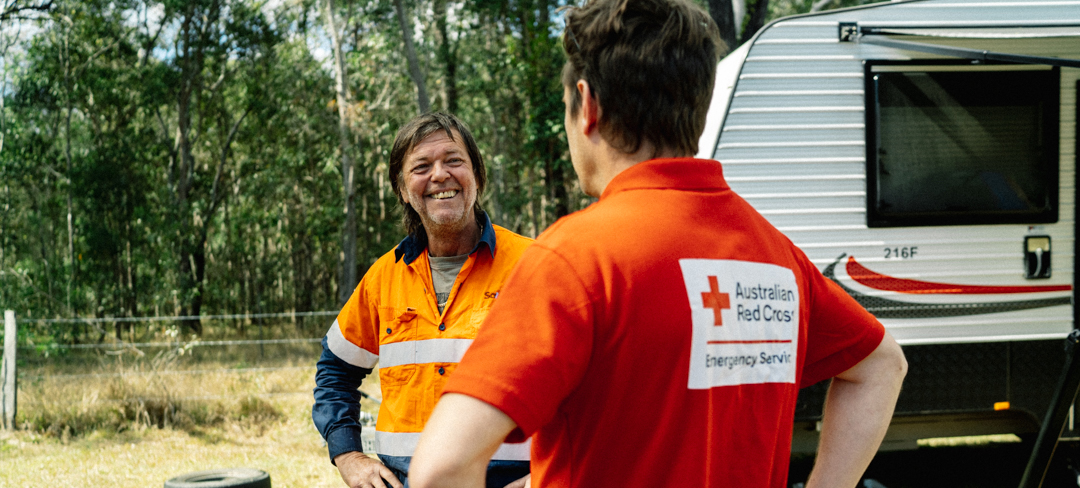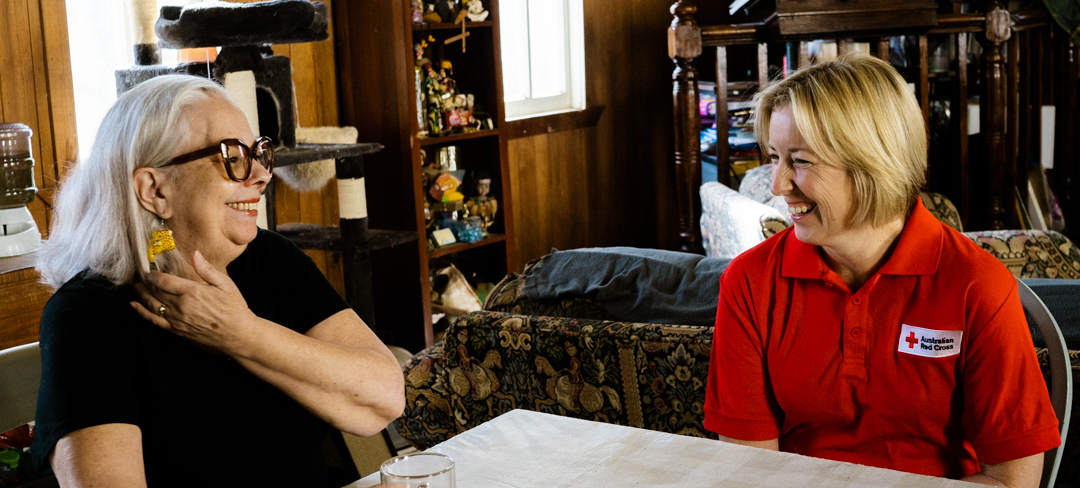Helping communities to rebuild

In the second year after a disaster, fatigue can set in. The eyes of the world move on and the adrenaline that powered so much of the recovery work in the immediate aftermath has been exhausted. This is when the reality of recovery, the complexity and enormity of it, becomes clear.
But thanks to donors, we can still be there for communities in recovery. In fact, the recovery stage is often when we can offer the most meaningful support.
Over the past twelve months, our focus has been on helping communities maintain momentum in their recovery. We do this by working with community leaders to build local connections, knowledge and resilience.
Best practice disaster recovery also means adapting to changing individual and community needs and recognising that every community recovers at their own pace.
Walking alongside First Nations communities
At Australian Red Cross, we are deeply committed to walking alongside First Nations communities.
In times of disaster, this means recognising the distinct challenges and vulnerabilities faced by First Nations communities and providing tailored support to aid their recovery journey.
After the 2022 floods, this response was supported by First Nations recovery officers who have invaluable knowledge and deep community ties. In the aftermath of these floods, they worked alongside these communities as advocates to ensure their voices were heard and their needs met.
We also continue to collaborate closely with First Nations leaders and organisations, to address specific cultural needs in our disaster response efforts. This collaborative approach ensures that our support is not only effective but also shaped and led by First Nations people themselves.

Since May 2022, thanks to generous donors we have delivered:
![]()
One-to-one support, community initiative support, workshops, and training for 18,195 people
![]()
Information and community engagement opportunities for 66,991 people
![]()
Psychological First Aid, Farm First Aid, Recovery Basics, Disaster Preparedness and Communicating in Recovery training for 2,295 local government and community stakeholders
![]()
Disaster resilience education for more than 1,172 people
Supporting migrant communities in their recovery journeys
In times of disaster, Australian Red Cross recognises and addresses the distinct challenges faced by migrant communities. We know that tailoring support to their specific needs, which can include language barriers, social isolation, and cultural differences, ensures a more effective and inclusive recovery process.
Our work in these communities looks like:
- Providing cash assistance to migrants and refugees who may not qualify for government grants
- Helping to ensure that linguistically diverse communities can access information in their first language through translators and translated materials
- Collaborating with TAFEs and universities to provide international students with access to information and support
“We tried ringing triple 0 but they just said they couldn't get to us.”
In the darkness at 2:30am, Ron and Fleur struggled against fast-flowing and dangerously high flood water to find safety on the steps of the local hall. After the rain finally stopped, it took a long time before emergency services could safely get to them and provide help.
“We had no warning.”
“We were sleeping and all of a sudden one of the cats jumped up on us in the bed with wet feet, really trying to wake us.… we were already up to our waist and [the water] was still coming up.”
Early recovery is critical
Ron and Fleur had only recently moved to Dallarnil, Queensland when they were rescued in the 2022 floods. They were in the early stages of renovating their home when disaster struck in the middle of the night.
From the beginning, Australian Red Cross was there to help them, and other community members, to respond, prepare, and recover from two successive and devastating floods.
This meant providing financial assistance, psychosocial support as well as capacity building for long-term recovery in the months and years after the flood.
Watch Ron and Fleur talk about their flood response and recovery
Preparing for future disasters
Local Australian Red Cross Recovery Officer Julia Avis says, “Recovery work post disaster starts with a large needs assessment to determine how communities were faring after the disaster and to make sure that the support was reaching them over the weeks and months after the floods.”
Then comes the preparedness program to get the community ready for another disaster. A lot of people don't want to think about that prospect, but in Dallarnil that’s exactly what happened seven weeks later. Julia knows that being prepared helps communities and people recover better and faster.
“I think the big issue with disasters now is just the frequency … and how many we're actually having, so communities aren't getting a chance to recover before the next one hits. The cumulative effect of that on people's wellbeing is massive.”
Disaster impact on people living in Australia
- 80% of people living in Australia have experienced disasters like flooding, heatwave, or drought in the last five years
- 21% of people still experience PTSD, depression, or stress after the 2009 Victorian bushfires
- $5 billion: the estimated insurance damages of the 2022 east-coast floods
- 83% of Australians worry more bushfires, floods, and droughts are on the way